Photo Guide
This photo guide contains a number of pictures of trees of a number of species common to woodlands in Kentucky with a range of damage.
Recommendations are provided for each photo regarding the loss of timber value, if timber should be salvaged and when, and a recommendation about the potential of the tree as it relates to long-term management.
Trees in a stand will be damaged by ice to different degrees. To determine the loss of value or whether a tree can be expected to recover you must look at each tree and determine what type of damage has occurred. Acceptable growing stock evaluation must include current condition, length of time for recovery, and current market conditions.
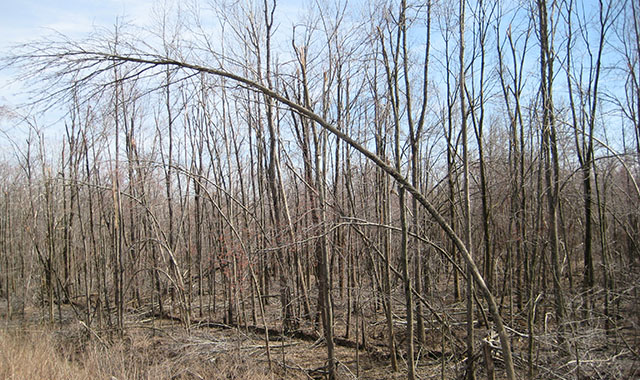
Bent Trees
Trees that have been bent more than 60 degrees from vertical generally will not straighten. These trees will not die, but if the bend is the mainstem they have already lost value and may be susceptible to future dieback.
Bent Trees Guide
Broken Trees
Oaks that have their mainstem broken may die while yellow-poplars and other fast growth species such as cottonwood may regenerate their top. How fast the log must be removed to recover value is based on how far up the stem the damage occurs.
Broken Trees Guide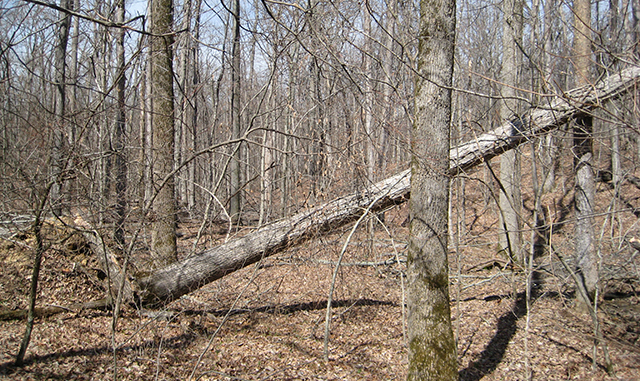
Downed Trees
Trees, regardless of species that are on or near the ground must be removed quickly to recover timber value. How quick this must occur depends upon the species, how much of the root system is still in the ground, and whether they are solidly on the ground or being held off the ground.
Downed Trees Guide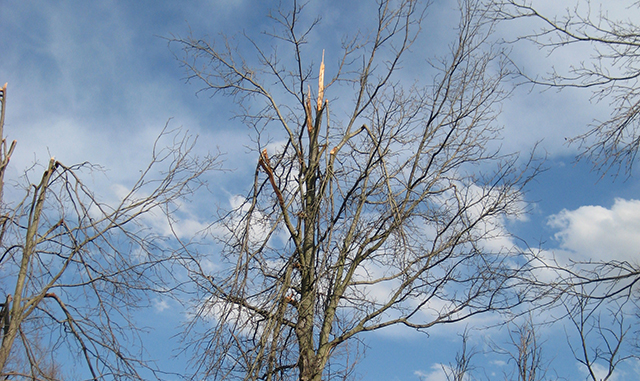
Moderate Tree Top Damage
Trees retaining 50% or more of their crowns generally will survive. There growth may be impacted.
Crown Loss Less Than 50% Guide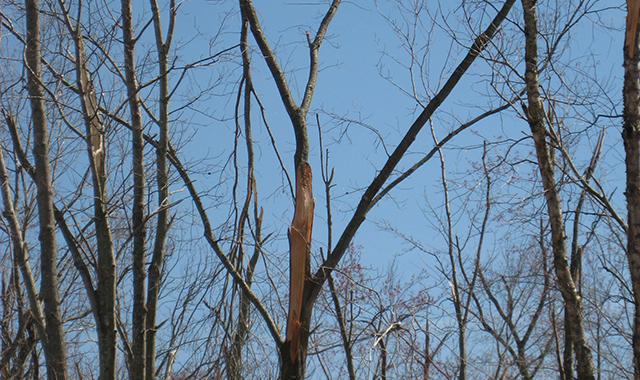
Major Branch Damage
Occasionally large branches will break off at the mainstem. This can introduce rot into the mainstem. The height above the ground indicates how fast the tree should be cut to recover timber value.
Major Branch Damage Guide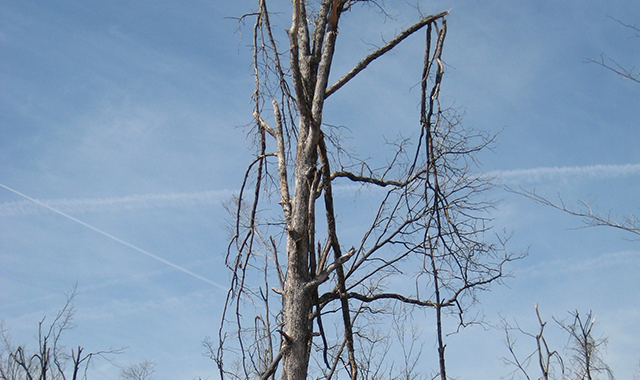
Severe Tree Top Damage
Tops with over 50% of their crowns lost must be critically evaluated. There will be a difference between species and species type to this of response. Oaks and slower growing species will die or take a significant amount of time to recover while faster growing species such as yellow-poplar and cottonwood will generally recover their crown.
Crown Damage Greater Than 50% Guide